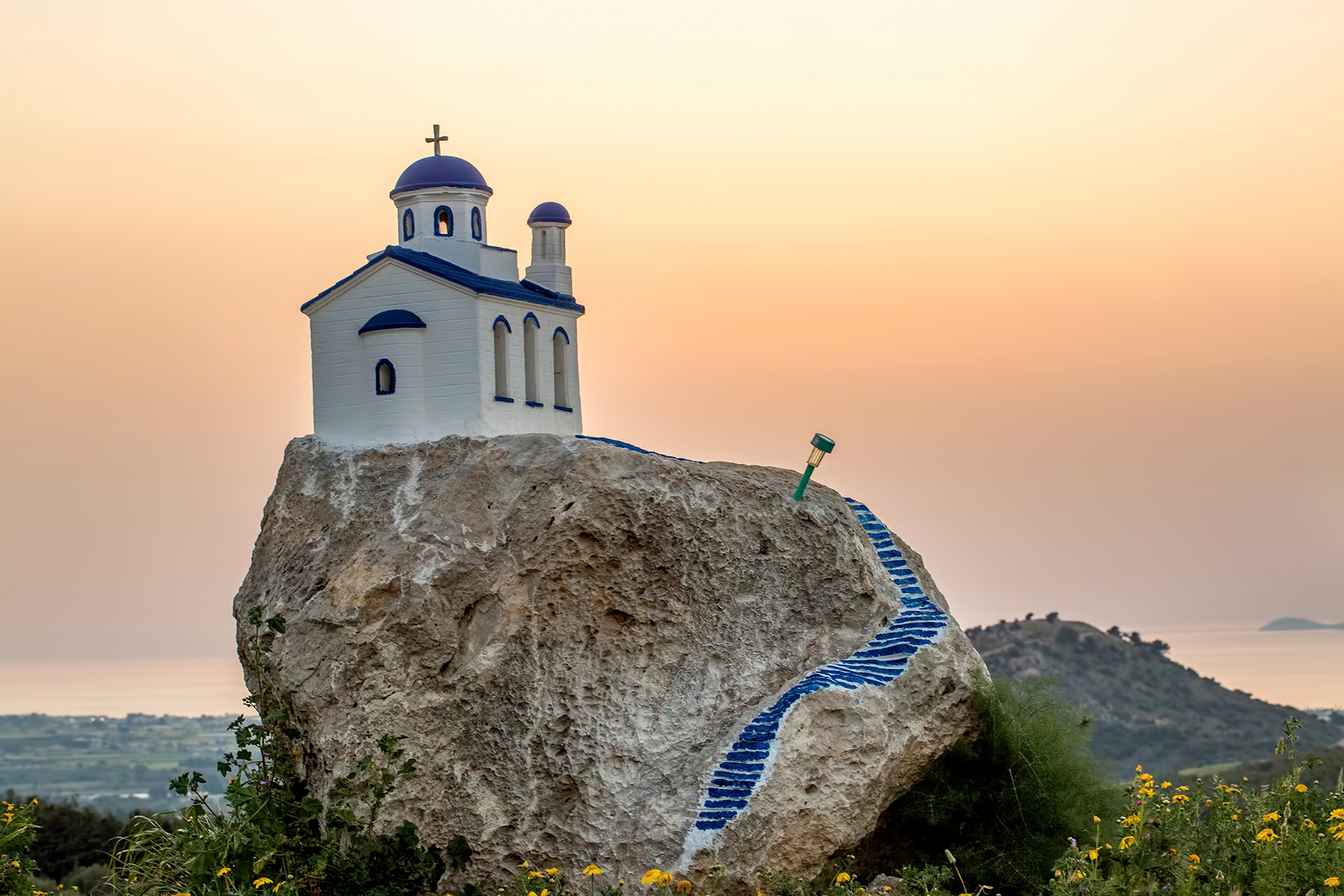The Festival Traditions of Kos
The Koans strive to maintain many of their oldest customs passed down generation to generation. These traditions reveal the essence of the island, and this soulful side is a gem to behold. Beaches, architecture, and history are touristic wonders to cherish but, without heritage, Kos would be just another island paradise. Here’s a sampling of festive traditions and events to look forward to when you visit Kos.
The Kamouzeles Custom
One of the most amazing carnivals of Kos, the custom of the “kamouzeles” (the “bucks”) is a Mardi Gras type of event that involves locals putting on masks and colorful woven coverings before taking to the streets in a mischievous parade. The kamouzeles go around the village teasing residents by waving menacingly the “kokala,” which is a donkey skeleton head with a mouth that opens and closes. The enthusiastic celebration continues throughout the night with lots of dancing, singing, and feasting on Kos culinary specialties. The carnival culminates with the “burning of the ghost” – an action symbolizing the burning of all sins. This is supposed to purify the devout and prepare the spirit for the Great Lent – 40 days of fasting before Easter.
“Archichronia”, an ancient tradition
Every September 1st the housewives of Kos take two wreaths, one old and one new, down to the sea to place at the edge of the water and allow the sea to wash 40 waves over them. This tradition is called “Archichronia”, which means “New Year” and is an ancient custom. The wreaths, made from pomegranates, grape branches, garlic, olive branches, and leaves from the famous plane tree of Hippocrates, are paraded down to the water to celebrate the beginning of a new year. Walking past the plane tree of Hippocrates, the women grasp at its trunk, then proceed to the sea to dunk the wreaths, after which they return pass the tree to hang the sea-kissed wreaths at their houses. It is said this ritual protects their houses from danger in the coming year.
Pyli Pig Slaughter Fest
During the first week of October the “Pig Slaughter Festival” is held in Pyli and other Kos villages. The ensuing events revolve around eating pig portions along with other delicacies, feasting on wine, and enjoying local music, arts, and crafts.
The Feast of Saint Andrew
On 30 November, the feast of Saint Andrew, or Agios Andreas, is celebrated all over Kos. During this traditional celebration, housewives prepare “akoumia” that is “loukoumades” (a kind of doughnut), which are in turn passed along to friends and relatives. The tradition of the celebration arose out of Kos islanders’ natural fear of the month of November and the widely held belief that Saint Andrew helps the crops to sprout or blossom.
The Feast of Agia Barbara
Held every December 4th, this feast began as an homage to the saint that was thought to protect the island’s children from the dreaded smallpox that once decimated populations across the Aegean and Europe. The feast centers around the preparation of “varvara” with cooked wheat, tahini, currants, sesame, walnuts, pomegranates, cinnamon, and other spices.
Christmas Fests
On Kos, the tradition of children in procession singing carols celebrating Christmas, New Year, and the Epiphany is still carried out. Groups of schoolchildren or youngsters with musical instruments take to the streets at these times, and on the day of the Epiphany, large crowds of people congregate at churches and on the beaches during the Asperges and for the throwing of the cross into the sea.
Other Festivals
Kos has many traditional events for visitors to take part in, other important ones worth mentioning are; the Ippokratia Festival (cultural events from July to September), the Dikaia Festival (July – August), Irakleia (Also July – August), the fish festival, the wine festival, and the honey festival which all take place in Summer.

